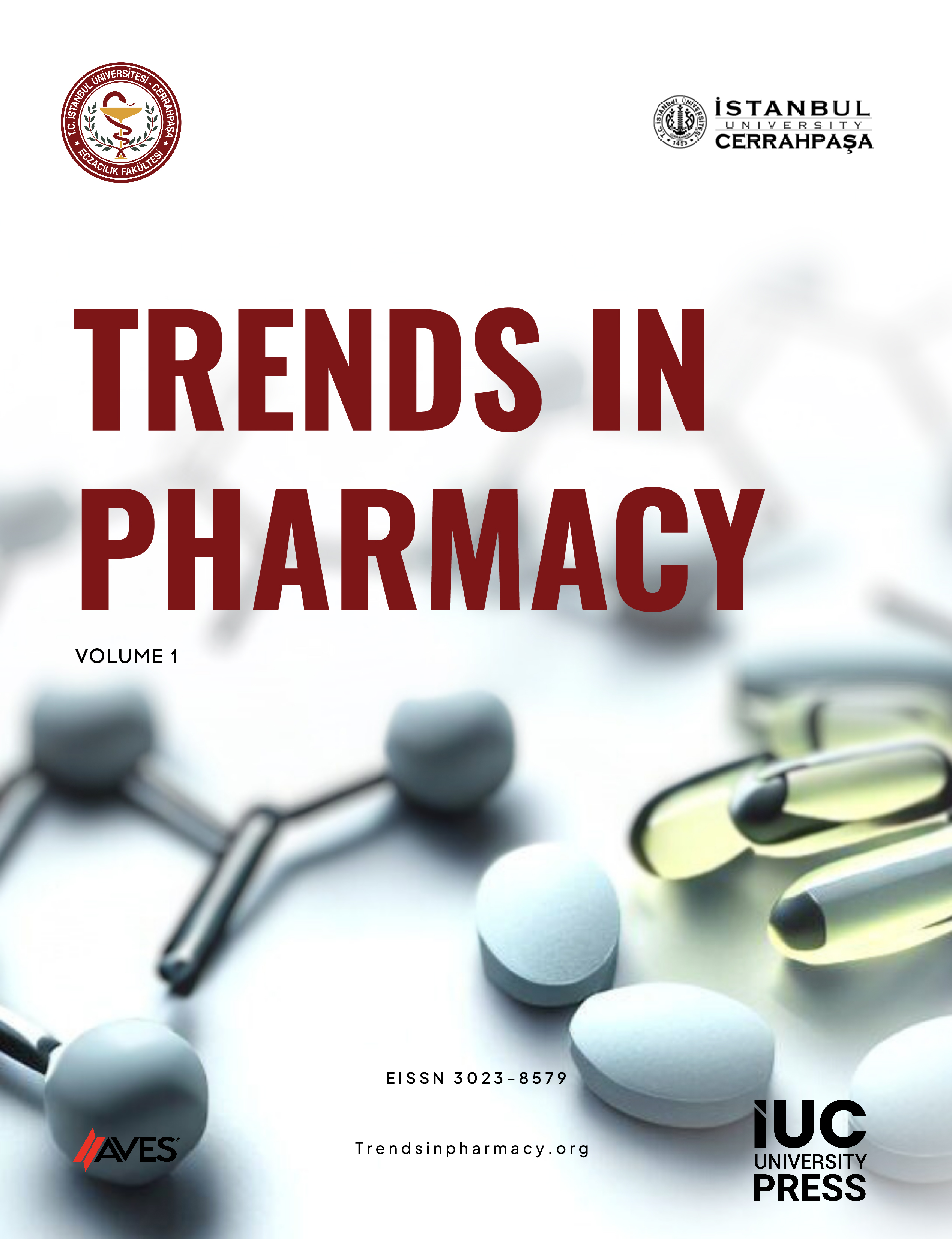
Effects of Ethanolic Extract of Anethum graveolens on T3, T4, and TSH Levels in Rat Model of L-Thyroxine Induced Hyperthyroidism
Main Article Content
Abstract
Background: Although Anethum graveolens (AG) is known for some biological activities such as antibacterial and antifungal effects, its ethnic use in Türkiye for the successful treatment of thyroid dysfunction diseases, including hyperthyroidism, has recently attracted the attention of scientists in this country. To evaluate the scientific basis of this approach, our group conducted a two-step study.
Methods: Firstly, the effective dose of AG ethanolic extract (AGEE) was determined as 300 mg/kg/day in healthy animals which caused a decrease in TSH levels after 30 days. In the current report as the second step, we studied the effects of a higher dose of AGEE in a hyperthyroidism animal model in a shorter time. AG was purchased from a local market and identified by the Pharmaceutical Botany Department. AGEE was prepared by maceration of dried leaves in ethanol and its composition was determined using LC-HRMS and GC-MS where fumaric acid and 2,4-Di-tert-buthylphenol were found to be the major compounds respectively. The hyperthyroidism model was conducted by adding 200 µg/kg/day L-thyroxine (L-thr) to the drinking water of female Wistar rats for 30 days. Afterward, 500mg/kg/day of vacuum-dried AGEE re-suspended in drinking water was applied for seven days without quitting L-thr addition (LAG group). Serum TSH, T3, and T4 levels were compared with the control group (C) and the groups which received only AGEE (AG) and L-thr (L).
Results: T3 level increased in L was decreased in LAG, the opposite was true for TSH. No difference in T4 levels was observed.
Conclusion: AGEE could be used as a potential selective inhibitor of T3.
Cite this article as: Aksu AD, Bahadori F, Elmas F, et al. Effects of ethanolic extract of Anethum graveolens on T3, T4, and TSH levels in rat model of L-thyroxine induced hyperthyroidism. Trends Pharm. 2024, 1, 10, doi: 10.5152/TrendsPharm.2024.23010
Article Details
References
1. Nowbandegani AS, Kiumarcy S, Rahmani F, et al. Ethnopharmacological knowledge of Shiraz and Fasa in Fars region of Iran for diabetes mellitus. Journal of Ethnopharmacology. 2015;172:281-287. [Crossref]
2. Al-Asmari AK, Al-Elaiwi AM, Athar MT, et al. A review of hepatoprotective plants used in Saudi traditional medicine. Evidence-Based Complementary and Alternative Medicine. 2014; 890842. [Crossref]
3. Mohammed FA, Elkady AI, Syed FQ, et al. Anethum graveolens (dill)-a medicinal herb induces apoptosis and cell cycle arrest in HepG2 cell line. Journal of Ethnopharmacology. 2018;219:15-22. [Crossref]
4. Javadi B, Iranshahy M, Emami SA. Anticancer plants in Islamic traditional medicine. In: Saad, M, ed. Complementary Therapies for the Body, Mind and Soul. London: Intech; 2015:119. [Crossref]
5. Tariq A, Sadia S, Pan K, et al. A systematic review on ethnomedicines of anti‐cancer plants. Phytother Res. 2017;31:202–264. [Crossref]
6. Altay M, Ates I, Efe FK, et al. Does use of Anethum graveolens affect thyroid hormone levels and thyroid nodules? American Journal of Therapeutics. 2017;24(5):e627-e629. [Crossref]
7. Altay M, Ates I, Kaplan EF, Karadag I. Herbal medicines used for thyroid disease in Turkey, and short-term effects of Anethum graveolens. BioScientifica; 2016. [Crossref]
8. Mansouri M, Nayebi N, Hasani-Ranjbar S, et al. The effect of 12 weeks Anethum graveolens (Dill) on metabolic markers in patients with metabolic syndrome; a randomized double-blind controlled trial. DARU Journal of Pharmaceutical Sciences. 2012;20(1):47. [Crossref]
9. Panda S. The effect of Anethum graveolens L. (dill) on corticosteroid-induced diabetes mellitus: Involvement of thyroid hormones. Phytother Res. 2008;22(12):1695-1697. [Crossref]
10. Idiz C, Aysan E, Elmas L, et al. Effectiveness of Anethum graveolens L. on antioxidant status, thyroid function and histopathology. Acta Endocrinologica (Buc). 2018;14(4):447. [Crossref]
11. Keshavarz S, Dehghani GA. Cerebral ischemia/reperfusion injury in the hyperthyroid rat. Iran J Med Sci. 2017;42(1):48.
12. Ferreira E, Silva A, Serakides R, et al. Induction of thyroid dysfunctions in adult female mice. Arquivo Brasileiro de Medicina Veterinária e Zootecnia. 2007;59(5):1245-1249. [Crossref]
13. Al-Snafi AE. The Pharmacological importance of Anethum graveolens-a review. International Journal of Pharmacy and Pharmaceutical Sciences. 2014;6(4):11-13.
14. Frag R, Daw Z, Abo-Raya S. Influence of some essential oils on Aspergillus parasiticus growth and production of aflatoxins in a synthetic mechanism. J Food Sci. 1989;54:74-76. [Crossref]

